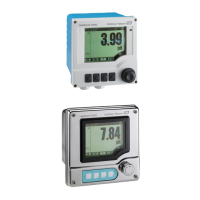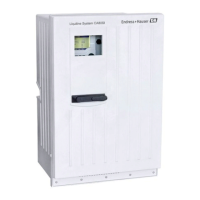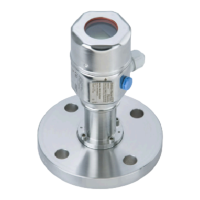CM42-MAA101EBE00 Calibration and adjustment
Endress+Hauser 5
2 Calibration and adjustment
The calibration provides important information on the condition of your sensor and the
quality of the pH measurement.
pH glass electrodes
In addition to the slope that has an ideal value of approx. -59 mV/pH at 25 °C, the change in the
zero point also provides important information to the user. It is an indicator of the condition of
the gel-like layer of the pH glass and could point to a blockage in the reference system. Suitable
maintenance would involve cleaning or regenerating the sensor.
To perform a quick test, simply immerse the sensor in a buffer solution with the same pH value
as the internal buffer (e.g. pH 7). 0 mV would be an ideal value. The greater the deviation from
the ideal value, the poorer the condition of the sensor (±20 mV is still acceptable in most
situations).
2.1 Definitions
Calibration (as per DIN 1319):
A calibration is defined as a set of operations that establish the relationship between the
measured value or expected value of the output variable and the related true or correct value of
the measured variable (input variable) for a measuring system under specified conditions.
A calibration does not alter the performance of the measuring device.
Adjustment
An adjustment corrects the value displayed by a measuring device, in other words the
measured/displayed value (the actual value) is corrected so that the reading agrees with the
correct, set value.
The value determined during calibration is used to calculate the correct measured value and
saved in the sensor.
2.2 Terminology
2.2.1 Zero point and slope
Using a mathematical function, the transmitter converts the input signal of the sensor y (raw
measured value) to the measured value x. In many cases, this function is a simple linear of the
form y = a + b
.
x.
The linear element "a" is usually equivalent to the zero point and the factor "b" is the slope of the
line and is often known as the sensor slope.

